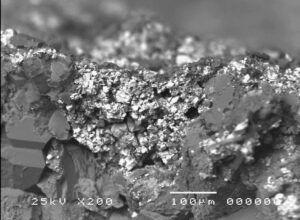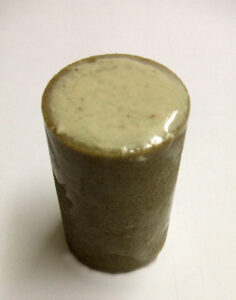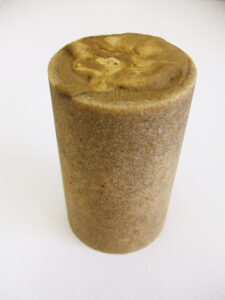Wellbore-shielding fluid additive during drilling, completions can help to boost potential production rates
Testing of cores from Venezuela, Colombia, Norway and Saudi Arabia confirm reduction in formation damage
By Rodney Uchytil, Paul Craddock and Justin Mclellan, Impact Fluid Solutions
While the production zone is typically the responsibility of the reservoir engineering team, taking proactive steps during drilling and considering the full life cycle of a well have been shown to minimize formation damage, thereby significantly enhancing potential production outcomes.
Reducing damage, or skin effect, in mechanically weak and structurally complex reservoir geologies is critical to maximizing production and enhancing the net present value of an asset. Tightening margins, however, have prompted the universal strategy to reach the payzone and put the well on production as quickly and as economically as possible.

Typically, that approach includes the application of standalone drilling or reservoir drill-in fluids (RDF), which can intrude into the formation, diminishing permeability and production flow of often intrinsically depleted reservoirs.
The resulting formation damage may extend a few centimeters or deep into the payzone, jeopardizing maximum reservoir drainage.
One option drilling and reservoir teams have is to include a wellbore-shielding additive in the fluid system, which blocks whole fluid filtrate losses into the production zone. Compatible in all types of drilling, RDF or completion fluids and comprising only 2% of the total fluid content, the technology also requires no acid cleanup to remove the deposited filter cake.
As confirmed in the results of a number of third-party return permeability studies, the use of wellbore-shielding technology consistently minimizes production-restricting formation damage. One independent study demonstrated that mixing the standard 2% concentration of the shielding technology within a 12.5-lb/gal oil-based RDF slashed the damage ratio from 64.3% to 4.5%.
Reservoir damage mechanics

In-fill development of mature fields and the young sedimentary rocks in many offshore plays represent the challenges operators face in maintaining permeability in often highly depleted and mechanically weak reservoirs. To that end, minimizing natural and induced formation damage to enable unobstructed production flow takes precedent when designing the reservoir drill-in and completions strategy.
Uncontrolled fluid invasion can further destabilize what is often inherently unstable geology, thereby laying down a thick and difficult-to-remove filter cake. The thicker filter cake, coupled with the increasing depth of filtrate invasion, can severely and often permanently restrict reservoir drainage. Conventional cleanup fluids, normally comprising of acids, oxidizers and enzymes, are used to clean the wellbore in preparation for the completions.
At an expected 96% acid solubility, calcium carbonate (CaCO3) is a universally accepted choice as a weighting and reservoir bridging additive. Notwithstanding its impressive acid solubility, calcium carbonate-based reservoir bridging agents have been documented as generating formation damage, inducing permeability impairment to the point of permanently restricting optimal flow rates.

As a safeguard against this treatment, there is an alternative approach – adopting wellbore-shielding technology to prevent fluid filtrate from intruding into the production zone, by essentially covering the reservoir with a thin but impenetrable “shield.” The wellbore-shielding additive pinholes and lift-offs with the initiation of production, thus requiring minimal differential back pressure.
Wellbore shielding
The ultra-low invasion FLC 2000 technology comprises cellulosic material, designed to form a shield. Once developed, it produces an extremely low-permeability barrier at the fluid-rock interface. The deposited barrier delivers an equally low invasion area across a broad range of permeability and microfractures up to 250 microns (µm).
Accordingly, the technology restricts the transmission of destabilizing wellbore pressure to the pore fluid and reduces filtrate invasion into the matrix permeability and microfractures. In essence, this mechanism raises the fracture initiation pressure by isolating the mud pressure in the wellbore from the geology, effectively inhibiting the fracture propagation process.
When a fracture begins to develop, a low-permeability seal instantly forms over the core of the fracture itself, preventing the continued invasion of fluid into the fracture and shutting down continued fracture generation. Since the unique sealing mechanism limits the transmission of wellbore pressure into the geology, the dramatic reduction of fluid influx in the microfractures minimizes the risks of formation breakdown and effectively stabilizes weak shales and carbonates.
The wellbore-shielding additive effectively controls fluid invasion at concentrations as low as 4-10 lb/bbl.
Formation damage studies
The heterogeneous characteristics of reservoirs worldwide preclude a one-size-fits-all strategy for formulating a drilling or drill-in fluid that will minimize formation damage and maximize production.
Consequently, reservoir-specific formation damage studies are routine, mainly for conventional offshore and onshore production payzones, and account for the majority of new production. Formation damage is of less concern for their unconventional counterparts, which rely on hydraulic fracturing to initiate first production.
To assess the potential risks, formation damage tests are performed on field-specific or similar formation cores in a hydrostatic cell to determine the return permeability of oil through the sample, which are measured in millidarcy (mD).
These studies have demonstrated the correlations between fluid filtrate loss and flow initiation pressure on return permeability. As such, low filtrate loss and low flow initiation pressure usually indicates less formation damage.
Generally, the accepted protocol for return permeability (core flooding) studies comprises the injection of oil in a prepared core under simulated reservoir pressures and temperatures. Once the initial permeability (Kli) is established, the sample core is circulated with the fluid to be tested at overbalance pressure and the filtrate loss recorded. After a predetermined static filtration period, oil is again injected in the sample and flow reversed in the production direction. Once the pressure has stabilized, the return permeability is determined and the damage ratio calculated.
To assess the non-damaging characteristics of the wellbore-shielding technology, a number of independent formation damage tests have been performed with various fluid types.
The regional comparative analysis shows a marked reduction in filtrate loss with drilling, RDF and brines incorporating the shielding additive.
Venezuela
Comparative return permeability studies were conducted on a high-pressure sandstone production zone in a Venezuelan field. The independent core tests were performed with an oil-based mud (OBM) on wells where average differential pressure had been measured at between 2,800 and 7,000 psi.
Under simulated overbalance pressure, the percentage of formation damage between the OBM with and without the wellbore-shielding additive was virtually the same. However, when the differential pressure on the core was increased to 2,500 psi, the formation damage produced by the base fluid was calculated at 64.3%.
By comparison, the identical OBM formulation containing the wellbore-shielding additive at a concentration of 7 lb/bbl generated a formation damage percentage of 4.5%, under the identical 2,500-psi conditions.
With the studies confirming the capacity of the technology to retain permeability, the wellbore-shielding agent was incorporated in the OBM used across the production zone, with 11 wells producing an incremental 1,800 BOPD, exceeding original production expectations.
Colombia
Third-party comparative return permeability tests were conducted on sandstone cores in a heavy oil production field in Colombia. The studies assessed the formation damage of a standalone 8 1/2-lb/gal synthetic-based brine, with a subsequent analysis using the same base fluid containing 6 lb/bbl of the wellbore-shielding additive.
For the tested plugs, the effective oil permeability (Keo) return with the base brine was calculated at 89.29%, while the same brine with the additive delivered a Keo return of 98.44%. The combined dynamic and static filtration volume of the synthetic brine mixed with the additive was also reduced from 11.72 cu cm to 9.49 cu cm. The independent test concluded the reduction in the damage ratio from 10.71% to 1.56% verified the efficacy of the wellbore-shielding agent in helping to protect the production formation.
Norway

A major operator selected an independent core analysis lab to conduct a formation damage study to appraise the suitability of using the FLC 2000 wellbore-shielding agent in upcoming wells planned for the Norwegian sector of the North Sea.
Initiated on Clashach sandstone cores, the return permeability tests were performed with 10-lb/gal synthetic-based mud, uniquely weighted up with a manganese tetroxide microfine weighting agent with a density of 4.8 sg, some 15% denser and 60% harder than conventional barite.
At simulated reservoir conditions, the return permeability after the synthetic base fluid was injected, measured at 491 mD a 14.5% decrease, compared with 468 mD, a 7.51% decrease, with the additive. On removal of the filter cake, there was some improvement to the permeability, with a 497 mD, or 13.4% decrease, and a 483 mD, a 4.55% decrease, for the base fluid with and without the wellbore-shielding additive, respectively.
Saudi Arabia
The same core analysis lab and protocol used in the Norwegian study evaluated the potential benefits of incorporating wellbore shielding technology in a 9.7-lb/gal calcium chloride-based brine drilling fluid.
In the only deviation from the Norwegian test procedure, the mud was dynamically applied across the wellbore face of the core sample at a 1,400 psi overbalance pressure for one hour.
At the 1,400-psi pressure, the total filtrate volume loss of the base fluid was measured at 2.786 ml, compared with a loss of 1.379 ml when the same formulation included 6 lb/bbl of the wellbore-shielding additive. Total return permeability for the base fluid without and with the additive was calculated at 66.8% and 70.8%, respectively.
Taking the filter cake out of the equation shows the return permeability of the base fluid without additive increasing to 72.9%, while the addition of the additive improved the return permeability to 79.7%.
As demonstrated in the independent study, the wellbore-shielding agent is effective in delivering low-invasion and improvements upon the damaging properties even when mixed in a low damaging calcium chloride brine fluid formulated with carbonate bridging solids.
Conclusion
Wellbore-shielding additives at low levels can help to reduce formation damage. Such additives also have the potential to increase production and enhance recovery through the dual action of:
- Near-wellbore protection, by preventing production matrix pore throat plugging,
and - Fluid/pressure transmission into the formation, by reducing the permeability of the filter cake membrane.
To achieve these characteristics, wellbore-shielding additives have been designed for their effective particle size, shape and aspect ratio, working synergistically with other fluid additives at the face of the production zone, mitigating damaging effects during the drilling and completion phase.
On return permeability flow, these materials aid the reduced lift-off pressure of the protective filter cake membrane and subsequent breakup of the filter cake, without the need for a remedial acid cleanup. DC




